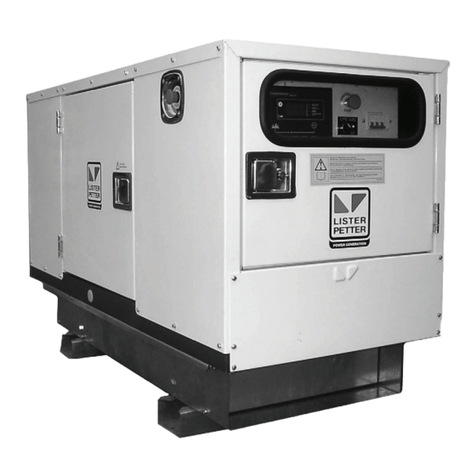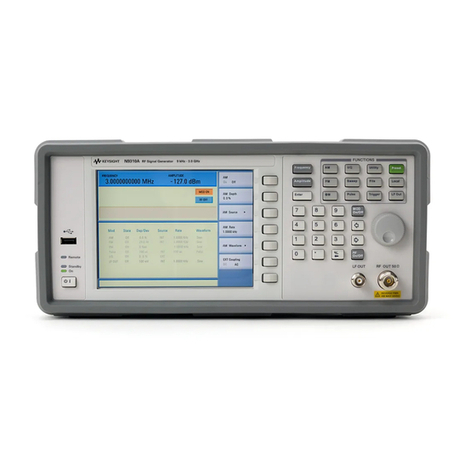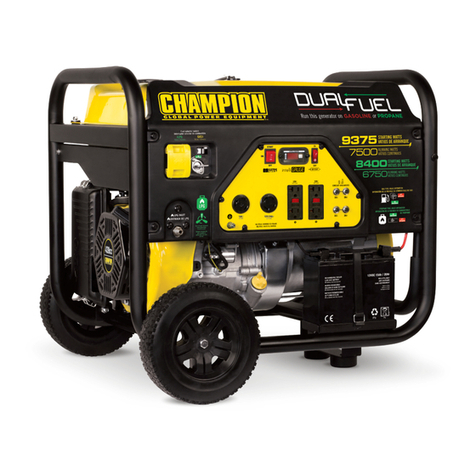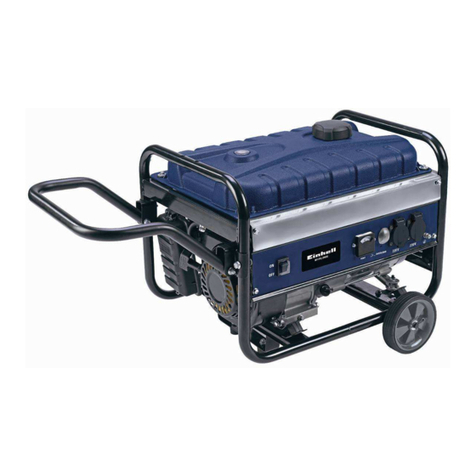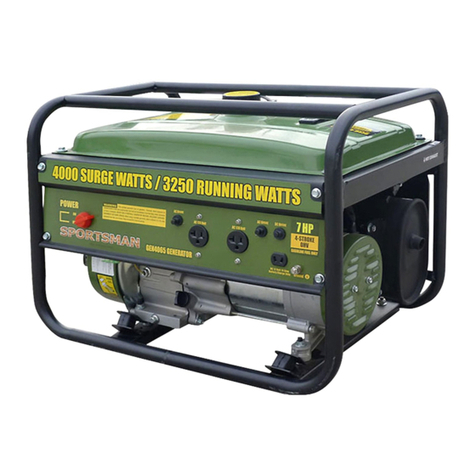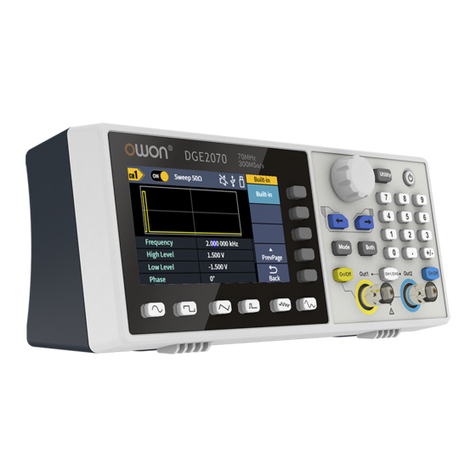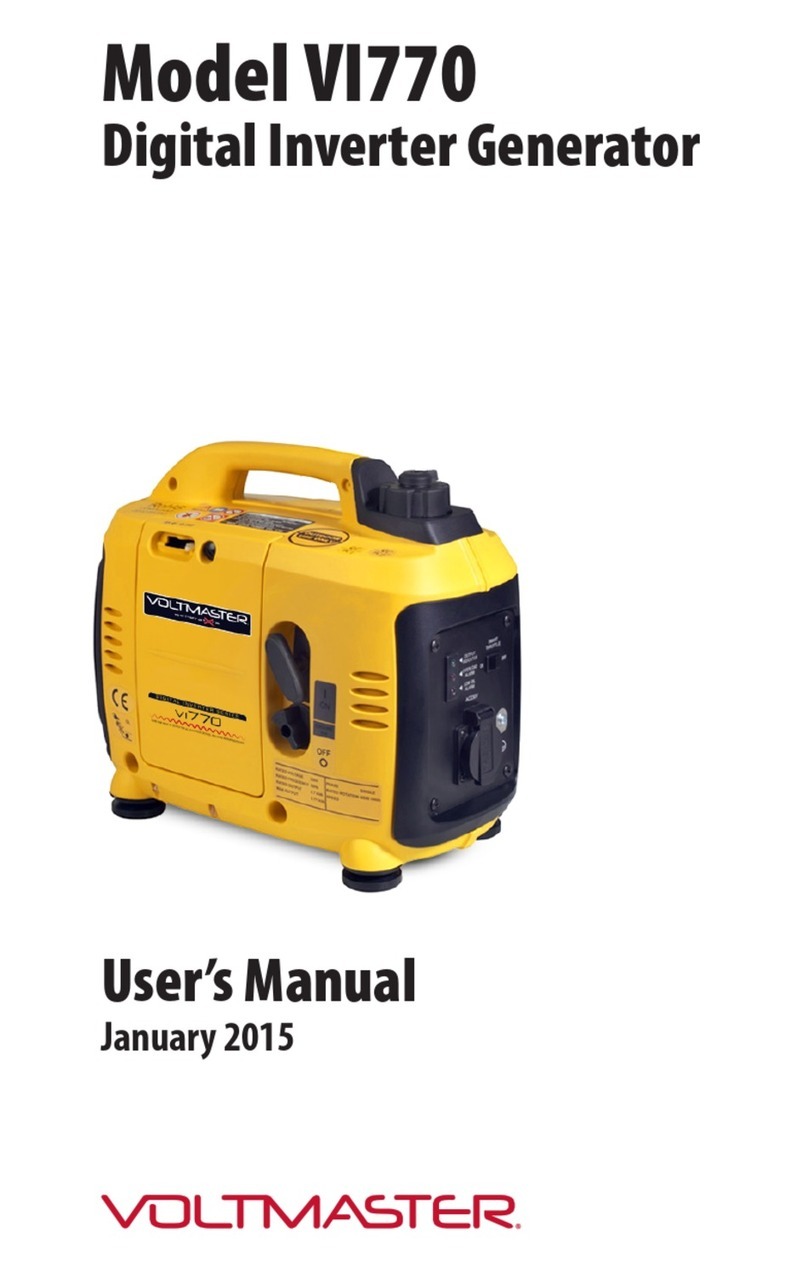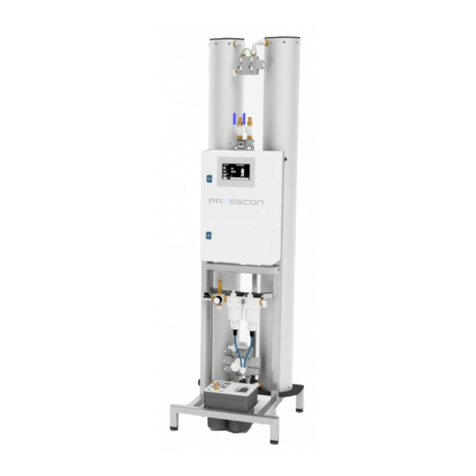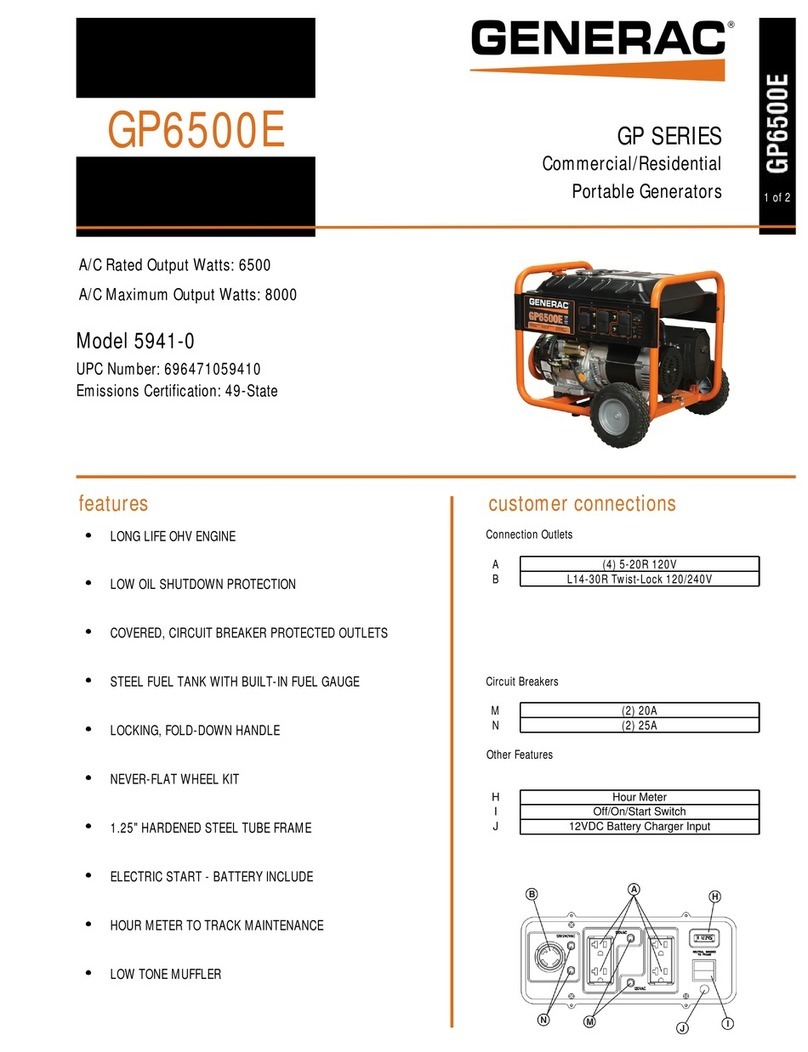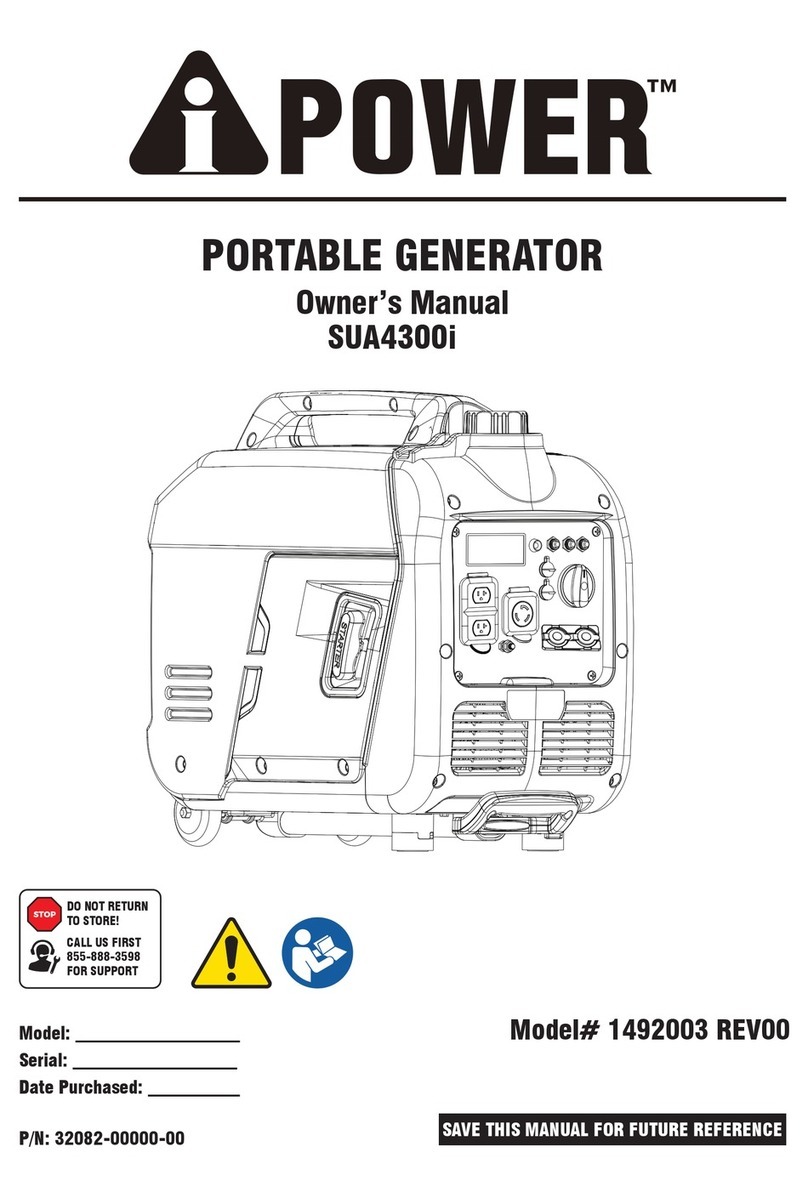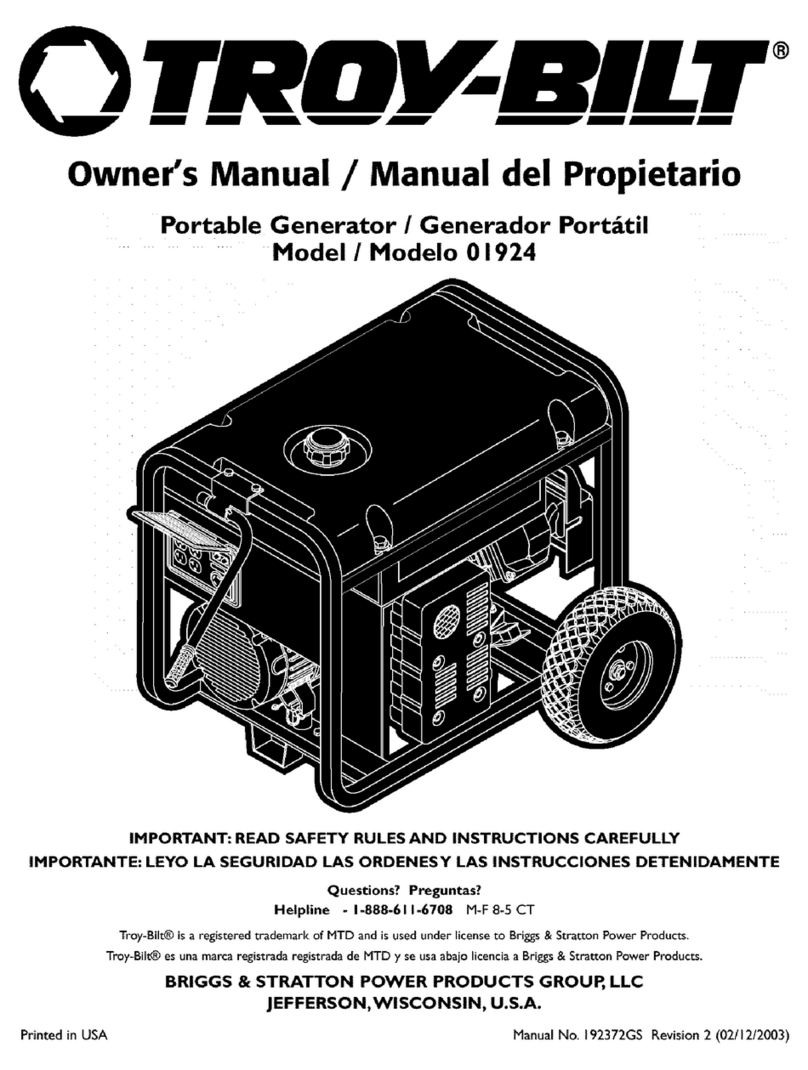Lister Petter LPP Series Service manual

LPP PetroL genset
oPerators' Handbook
ORIGINAL INSTRUCTIONS
P027-10760
LPP SERIES

2
Statement of Indemnity
P027-10760
WARNING
WARNING
WARNING
WARNING

3
CONTENTS
4
12
1
16
18
22
2
31
32
33
3

4
LPP PETROL GENSET OPERATORS' HANDBOOK
Read the information in this section carefully and follow all the advice given. Pay
special attention to the cautions and warnings demonstrated below, which are
used throughout this handbook.
DANGER
WARNING
CAUTION
SAFETY INFORMATION

LPP PETROL GENSET OPERATORS' HANDBOOK
WARNING
1. Read carefully and understand operator manual prior to operation of this product.
Follow all warnings and instructions.
2. Know your equipment. Consider the applications, limitations, and the potential
power supply such as frequency, voltage, AC wave shape etc.
generator at least 1m (3 ft) away from buildings or other equipment when
operating the generator. If the generator is tilted, fuel spillage and bad lubrication
may result.
SAFETY AND OPERATION RULES
4. Load must be kept within rating stated on generator nameplate. Overloading
will damage the unit or shorten its life.
5. Engine must not be run at excessive speeds. Operating an engine at excessive
speeds increases the hazards of personal injury. Do not tamper with parts which
may increase or decrease the governed speed.
6. To prevent accidental starting, always remove the spark plug or cable from the
spark plug before maintaining the generator or engine.
7. Units with broken or missing parts, or without protective
housing or covers, should never be operated. Contact your
service center or local dealer for replacement parts.

6
LPP PETROL GENSET OPERATORS' HANDBOOK
8. Units should not be operated or stored in wet or damp
conditions or on highly conductive locations such as metal
decking and steel work.
9. Keep the generator clean and free of oil, mud, and other foreign matter.
10. Extension cords, power cords, and all electrical equipment must be in good
condition. Never operate electrical equipment with damaged or defective
cords.
fuel tank empty. Fuel should not be stored near the
generator.
12. Your generator should never be operated under these conditions:
a. Uncontrolled change in engine speed.
b. Electrical output loss.
c. Overheating in connected equipment.
e. Damaged receptacles.
g. Excessive vibration.
h. Flame or smoke.
i. Enclosed area.
j. Rain or inclement weather. Do not let the unit get wet when operating.
13. Check the fuel system periodically for leaks or signs of deterioration such as
chafed or spongy hose, loose or missing clamps, or damaged tank or cap.
All defects should be corrected before operation.
14. The generator should be operated, serviced, and refueled only under the
following conditions:
the generator in an enclosed area, even if doors or
windows are open; avoid areas where vapors may be
trapped such as pits, garages, cellars, excavations
and boat bilges.

7
LPP PETROL GENSET OPERATORS' HANDBOOK
DANGER - CARBON MONOXIDE HAZARD: The engine exhaust contains
carbon monoxide, a poisonous, odourless, invisible gas which, if breathed, may
cause death or serious personal injury. If you start to feel sick, dizzy or weak
while using the generator, shut it off and get to fresh air right away; you may
have carbon monoxide poisoning.
cooled units. Temperatures should not exceed ambient 40°C (104°F).
c.Refuel the generator in a well lighted area. Avoid fuel spills and never refuel
while the generator is running. Allow engine to cool for two minutes prior to
refueling.
as power tools, welders, and grinders .

8
LPP PETROL GENSET OPERATORS' HANDBOOK
f. Do not smoke near the generator.
15. Ensure that generator is properly grounded.
16. Do not wear loose clothing, jewelry, or anything that may be caught in the
starter or other rotating parts.
17. Unit must reach operating speed before electrical loads are connected.
Disconnect loads before turning off engine.
18. To prevent surging that may possibly damage equipment, do not allow engine
to run out of fuel when electrical loads are applied.
19. Do not stick anything through ventilating slots, even when the generator is
not operating. This can damage the generator or cause personal injury.
20. Before transporting the generator in a vehicle, drain all fuel to prevent leakage
that may occur.
21. Use proper lifting techniques when transporting the generator from site to
site. Improper lifting techniques may result in personal injury.

9
LPP PETROL GENSET OPERATORS' HANDBOOK
surfaces which became hot during operation.
23. Know how to stop the generator quickly and understand operation of all
the controls. Never permit anyone to operate the generator without proper
instructions.
24. Keep children and pets away from the generator when the generator is
running.
25. Avoid placing any flammable materials near the exhaust outlet during
operation.
26. Never touch the machine with wet hands or electrical shock will occur.
ELECTRICAL SAFETY
Every year many people injured through electrical shock. Portable, electrically
operated tools account for the second largest number of injuries, with the plug or
cord at fault in two-thirds of the incidents. Insurance company statistics indicates
that rental equipment is involved in a high percentage of such accidents, and it
is important to realized that the rental operator is liable for those defects of which
he is aware, as well as those which would have been disclosed by a reasonable
investigation.

10
LPP PETROL GENSET OPERATORS' HANDBOOK
LEAKAGE CURRENT
One of the most important checks to be sure a tool is safe is for excessive leakage
equipment housing or enclosure.
exceeds about 48 volts that hazards exists. At a common supply voltage of 120V
pass through the body.
One milliampere (1/1000 of an ampere) will
be felt by most individuals as a slight tingling
sensation. A defective hand drill or floor
polisher might allow this amount of current
to use the equipment, until he happens to
touch a water connection, heating register,
metal window sash or other grounded metal
object. He has now completed the circuit to
through his body.
required to operate a 25-watt lamp) flow
through his body, it will result in a violet
muscle reaction, throwing him away from the
equipment.
If the current is much above 10 milliamperes,
the person will lose his ability to release his grip
on the electricity equipment. While the heart
normally can continue to function, fatigue sets
in, followed by death if no help is available.

11
LPP PETROL GENSET OPERATORS' HANDBOOK
At about 100 milliamperes (less than half that
heart is no longer able to pump blood.
When a tool is operating normally, electricity
passes through one wire the tool and back out
the second wire. Little or no current should
travel down the ground wire.
If a tool’s insulation becomes defective, some
of the electrical current will pass through the
tool’s case to the ground wire and back to the
ground. The person holding the tool will not be
line fuse will open. The only problem is that
this depends on a good ground path all the
way back to the ground itself.
If the ground wire doesn’t make a perfect
contact all the way back to the ground, the
to the ground. The amount of shock the person
receives will depend on how defective the
tool’s insulation is and how well grounded
the main is.

12
LPP PETROL GENSET OPERATORS' HANDBOOK
WATTAGE CALCULATION
The biggest problem in selecting a generator is determining the power requirements
that must be met under operating conditions.
Under-sizing of the generator is the single most common mistake and can be
avoided by considering all the loads to be connected to the generator. Additionally,
calculating the starting requirements of any electric motor operated equipment is
a very important consideration.
An estimate of the total load that will be connected to the generator can be made
by getting the nameplate amperage of all equipment or tools to be used. The
nameplate, showing the electrical requirements, is found on all electric powered
tools, appliances, electric motors or devices. It lists such information as running
amperage, the speed at which the tool operates; hertz,or frequency; phase; and
Once the total amperage draw for all tools and equipment is known, the following
can be used to establish starting wattage required:
If the equipment is for heating or lighting and contains no electric motors, multiply
the running amperage requirement times 1, times the voltage rating or requirement.
The result will tell the wattage required for this application. Heaters, light bulbs,
coffee makers, hot plates, are refered to as resistive loads. This type of equipment
draws a constant amount of current while operating.
If the equipment to be powered consists of hand tools, such as saws, drills or
other, handheld type of equipment; multiply the running amperage times 2, times
the voltage requirement. Again, the result will tell the wattage required for this
application. These types of equipment typically draw twice their normal, free running
amperage when used at full capacity or when starting the motor.
If the equipment being run is stationary equipment or appliances containing electric
motors, multiply the running amperage times 3, times the voltage requirement.
Once again, the result will tell the wattage required for this application. Electric
motor driven stationary equipment typically requires up to three times the running
amperage when starting, until the machine’s motor comes up to operating
speed.
Generator wattage required = (amps) x (volts) x (1, 2, or 3)
This example will help to explain these requirements.
A customer wants to operate the following equipment on a generator:
and (5) Four sixty-watt light bulbs.
SELECTING A GENERATOR

13
LPP PETROL GENSET OPERATORS' HANDBOOK
Tools / Equipment Nameplate Running Watts Times (x)
1, 2, 3 Starting Watts
Radiant heater 1250 1 1250
Freezer 400 3 1200
Small refrigerator 400 3 1200
Microwave Oven 750 1 750
4 Sixty-watt Light Bulbs 240 1 240
Total 3840 4640
A total of 4640 starting watts are required if all the items were started simultaneously.
This would require the use of generator with a minimum continuous rating of 5000
watts.
TYPICAL EQUIPMENT REQUIREMENTS
Appliance Watts Appliance Watts
Light bulb See bulb Coffee makers 400-700
Clothes dryer 5000-10,000 Window fan 200
Iron(Hand) 500-1500 Radio 50-200
Portable heater 600-4800 Air conditioner
(10000 BTU) 2000-3000
Toaster 900-1650 Automatic washer 150-1500
0-1/2 inch hand saw 1000-2500 Refrigerator 600-2000
Water heater 3000-5000 Television 100-500
Water pump 1000-3000 Vacuum cleaner 200-300
Sump pump 400-3000 Electric drill 225-100
Food freezer 300-500 Hot plate 330-1100
ELECTRIC MOTOR LOADS
It is characteristic of common electric motors in normal operation to draw up to
six times their running current while starting. The following table shows the watts
required to start motors, however if an electric motor fails to start or reach running
speed, turn off the appliance or tool immediately to avoid equipment damage.
Always check the requirements of the tool or appliance being used compared to
the rated output of the generator.

14
LPP PETROL GENSET OPERATORS' HANDBOOK
Motor size (HP) Running watts Watts required to start motor
Repulsion induction Capacitor Split phase
1/8 275 600 850 1200
1/6 275 600 850 2050
1/4 400 850 1050 2400
1/3 450 975 1350 2700
1/2 600 1300 1800 3600
3/4 850 1900 2600
1 1100 2500 3300

LPP PETROL GENSET OPERATORS' HANDBOOK
OPERATING VOLTAGE
CAUTION
A power line conditioner should be used when running one or more of the following
solid state equipments:
Televisions
Personal computer
Copy machines
Telephone equipment
Kitchen appliances with digital displays
Garage door openers
Stereos
Quartz clocks
Other solid state equipment may require a power line conditioner.

16
LPP PETROL GENSET OPERATORS' HANDBOOK
INSTALLATION
WARNING
To avoid backfeeding into utility systems, isolation of the residence electrical
system is required. Before temporary connection of the generator to the residence
electrical system, turn off the main service / disconnect.
If your generator is to be used as a stand-by power source in case of utility power
failure, it should be installed by a registered electrician and in compliance with all
applicable local electrical codes.
Proper use requires that a double throw transfer switch be installed by a licensed
between utility power and the generator’s output, thereby preventing backfeed
into the power utility’s electrical system.

17
LPP PETROL GENSET OPERATORS' HANDBOOK
WARNING
Always follow local codes and regulations that apply to the installation of any item
that concerns this product.
EXTENSION CORD
Maximum recommended lengths (in feet)
Amps
Dia.
0.1285in
(3.26mm)
Wire
Dia.
0.1019in
(2.59mm)
Wire
Dia.
0.0808in
(2.05mm)
Wire
Dia.
0.0641in
(1.63mm)
Wire
Dia.
0.0508in
(1.29mm)
Wire
2.5 1000 600 375 250
5 500 300 200 125
7.5 350 200 125 100
10 250 150 100 50
15 150 100 65
20 175 125 75 50
25 150 100 60
30 125 65
40 90
245) or the equivalent to withstand mechanical stresses.
LINE TRANSFER SWITCH
If this generator is used for standby service, it must have a transfer switch
between the utility power service and the generator. The transfer switch not only
prevents the utility power from feeding into the generator, but it also prevents the
generator from feeding into the utility company’s lines. This is intended to protect
a serviceman who may be working on a damaged line. THIS INSTALLATION
MUST BE DONE BY A LINCENSED ELECTRICIAN AND ALL LOCAL CODES
MUST BE FOLLOWED.

18
LPP PETROL GENSET OPERATORS' HANDBOOK
PRE-OPERATION CHECK
GROUNDING
Be sure to ground (earth) the generator.
The ground terminal connected to the frame of the generator has been provided
for grounding purpose.
(1) Ground wire diameter: 0.12 mm (0.005in) per ampere
The ground wire should be made of 0.1285 in dia (AWG#8) copper wire. Do not
use wire with a higher gauge number. Higher gauge numbers indicate thinner
wire, which may not provide an adequate ground path.
generator frame. Tighten the lock nut on top of the ground wire end terminal.
The other end of the ground wire must be securely fastened to an approved
ground source. The examples given below illustrate a few of the ways in which
a good ground source may be established.
A metal underground water pipe in direct contact with the earth for at least 10
feet canbe used as a grounding source. If an underground pipe is unavailable,
an 8 foot length of pipe or rod may be used as the ground source. The pipe
should be 3/4 inch diameter or larger and the outer surface must be noncorrosive.
If a steel or iron rod is used it should be at least 5/8 inch diameter and if a
nonferrous rod is used it should be at least 1/2 inch diameter and be listed
as material for grounding. Drive the rod or pipe to a depth of 8 feet. If a rock
bottom is encountered less than 4 feet down , bury the rod or pipe in a trench.
All electrical tools and appliances operated from this generator, must be properly
grounded by use of a third wire or be "Double insulated".

19
LPP PETROL GENSET OPERATORS' HANDBOOK
It is recommended to:
1. Use electrical devices with 3 prong power cords.
2. Use an extension cord with a 3 hole receptacle and a 3 prong plug at opposite
ends to ensure continuity of the ground protection from the generator to
appliance.
For the approved ground sources, refer to the local laws and regulations. If not
LUBRICATION
amount and type of oil. Your generator has been shipped from the factory
without oil in the crankcase. Operating the generator without oil can damage
the engine.
35(23(5$7,21&+(&.
/XEULFDWLRQ
'RQRWDWWHPSWWRVWDUWWKHHQJLQHZLWKRXW
ILOOLQJ WKH FUDQNFDVH ZLWK WKH SURSHU
DPRXQW DQG W\SH RI RLO <RXU JHQHUDWRU
KDV EHHQ VKLSSHG IURP WKH IDFWRU\
ZLWKRXWRLOLQWKHFUDQNFDVH2SHUDWLQJ
WKH JHQHUDWRU ZLWKRXW RLO FDQ GDPDJH
WKHHQJLQH
)LOO WKH HQJLQH ZLWK RLO DFFRUGLQJ WR WKH
RSHUDWRUPDQXDO)RUXQLWVZLWKDGLSVWLFN
ILOORLOWRWKHSURSHUOHYHO8QLWVZLWKRXWD
GLSVWLFN VKRXOG EH ILOOHG WR WKH WRS RI WKH
RSHQLQJRIWKHRLOILOO'RQRWRYHUILOO'RQRWVFUHZWKHRLOGLSVWLFNLQWRWKHRLOILOOHUQHFNWRFKHFN
RLOOHYHO
(QJLQHRLOUHFRPPHQGDWLRQV
Ƶ 2LOLVDPDMRUIDFWRUDIIHFWLQJSHUIRUPDQFHDQGVHUYLFHOLIH
Ƶ 8VLQJ VWURNH DXWRPRWLYH GHWHUJHQW RLO 6$( : LV UHFRPPHQGHG IRU JHQHUDO
XVH
Ƶ 6HOHFWLQJWKHYLVFRVLW\LVEDVHGRQWKHDLUWHPSHUDWXUHDWWKHWLPHRIRSHUDWLRQ
Ƶ 5HFRPPHQGHGHQJLQHRLOFODVVLILFDWLRQ$3,VHUYLFH³6(´RUKLJKHUJUDGH
/RZRLOZDUQLQJV\VWHP
0RVWRIJHQHUDWRUVDUHHTXLSSHGZLWKDORZRLOVHQVRU,IWKHRLOOHYHOEHFRPHVORZHUWKDQUHTXLUHG
WKHVHQVRUZLOODFWLYDWHDZDUQLQJGHYLFHRUVWRSWKHHQJLQH
,IWKHJHQHUDWRUVWRSVDQGWKHRLOOHYHOLVZLWKLQVSHFLILFDWLRQVFKHFNWRVHHLIJHQHUDWRULVVLWWLQJDW
DQDQJOHWKDWIRUFHVRLOWRVKLIW3ODFHRQDQHYHQVXUIDFHWRFRUUHFWWKLV,IHQJLQHIDLOVWRVWDUWWKH
RLOOHYHOPD\QRWEHVXIILFLHQWWRGHDFWLYDWHORZRLOOHYHOVZLWFK0DNHVXUHWKHVXPSLVFRPSOHWHO\
IXOORIRLO
)XHOUHFRPPHQGDWLRQV
6WURNH(QJLQH
8VLQJXQOHDGHGSHWUROZLWKDSXPSRFWDQHUDWLQJRIRUKLJKHU8QOHDGHGSHWUROSURGXFHV
IHZHU HQJLQH DQG VSDUN SOXJ GHSRVLWV DQG H[WHQGV H[KDXVW V\VWHP OLIH 1HYHU XVH VWDOH RU
FRQWDPLQDWHGSHWURORUDQRLOSHWUROPL[WXUH$YRLGJHWWLQJGLUWRUZDWHULQWKHIXHOWDQN
2FFDVLRQDOO\ \RX PD\ KHDU D OLJKW ³ VSDUN NQRFN´ RU ³SLQJLQJ´ PHWDOOLF UDSSLQJ QRLVH ZKLOH
RSHUDWLQJXQGHUKHDY\ORDGV7KLVLVQRFDXVHIRUFRQFHUQ
,IVSDUNNQRFNRUSLQJLQJRFFXUVDWDVWHDG\HQJLQHVSHHGXQGHUQRUPDOORDGFKDQJHEUDQGVRISHWURO
1RWLFH
5XQQLQJ WKH HQJLQH ZLWK SHUVLVWHQW VSDUN NQRFN RU SLQJLQJ FDQ FDXVH HQJLQH GDPDJH
5XQQLQJWKHHQJLQHZLWKSHUVLVWHQWVSDUNNQRFNRUSLQJLQJLVFRQVLGHUHGPLVXVH
Fill the engine with oil according to the operator manual. For units with a dipstick,
WARNING

20
LPP PETROL GENSET OPERATORS' HANDBOOK
ENGINE OIL RECOMMENDATIONS
Oil is a major factor affecting performance and service life.
general use.
operation.
LOW OIL WARNING SYSTEM
Most of generators are equipped with a low oil sensor. If the oil level becomes lower
than required, the sensor will activate a warning device or stop the engine.
generator is sitting at an angle that forces oil to shift. Place on an even surface to
low oil level switch. Make sure the sump is completely full of oil.
FUEL RECOMMENDATIONS
4-Stroke Engine
Using unleaded petrol with a pump octane rating of 86 or higher. Unleaded petrol
produces fewer engine and spark plug deposits and extends exhaust system life.
Never use stale or contaminated petrol or an oil/petrol mixture. Avoid getting dirt
or water in the fuel tank.
Occasionally you may hear a light "spark knock" or "pinging" (metallic rapping
noise) while operating under heavy loads. This is no cause for concern.
If spark knock or pinging occurs at a steady engine speed, under normal load,
change brands of petrol.
Note:
2-Stroke Engine
Use oil-mixed petrol. If not, engine will be overheated. Usually the petrol and oil
mixing ratio: 50:1
Table of contents
Other Lister Petter Portable Generator manuals
Popular Portable Generator manuals by other brands
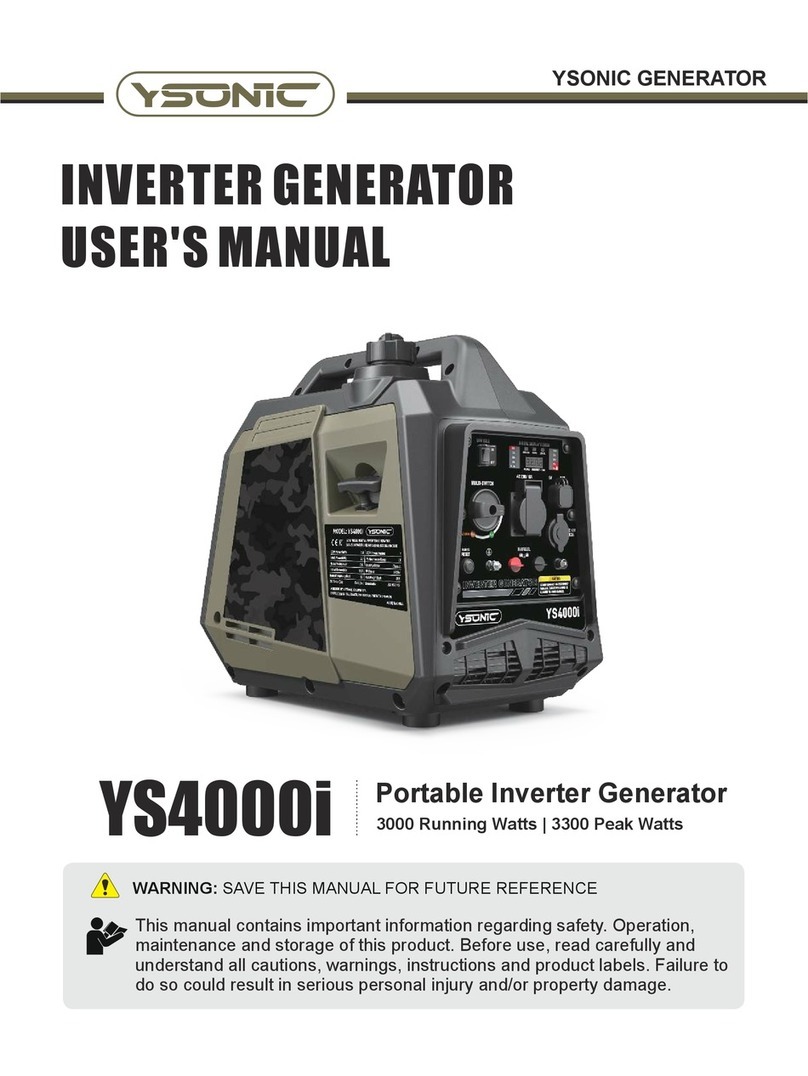
YSONIC
YSONIC YS4000i user manual

Westerbeke
Westerbeke 20.0KW sbeg Operator's manual
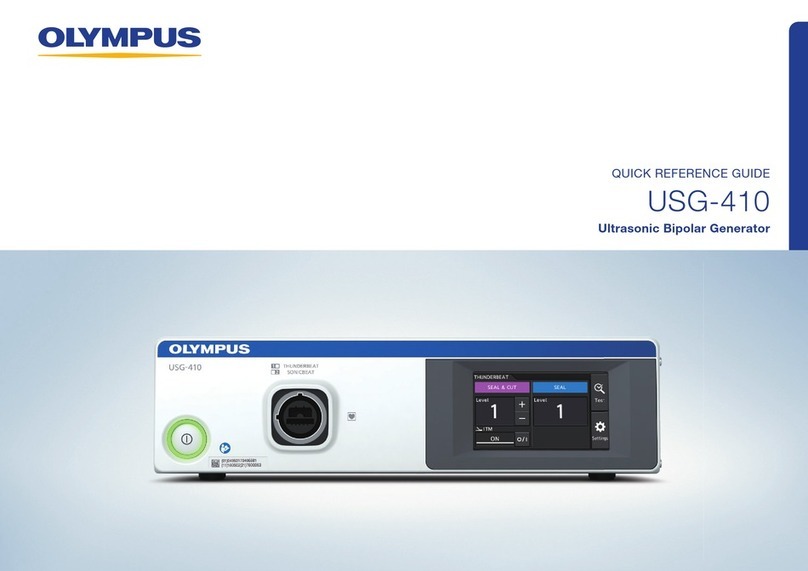
Olympus
Olympus USG-410 Quick reference guide
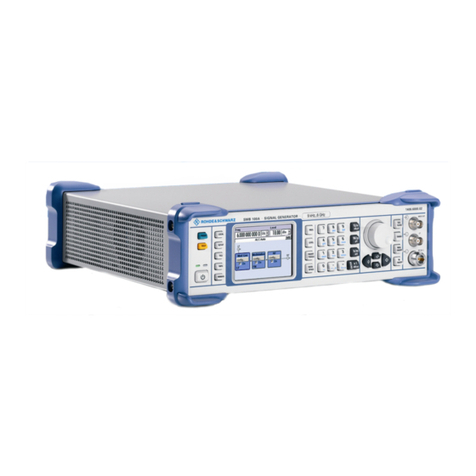
Rohde & Schwarz
Rohde & Schwarz SMB100A quick start guide
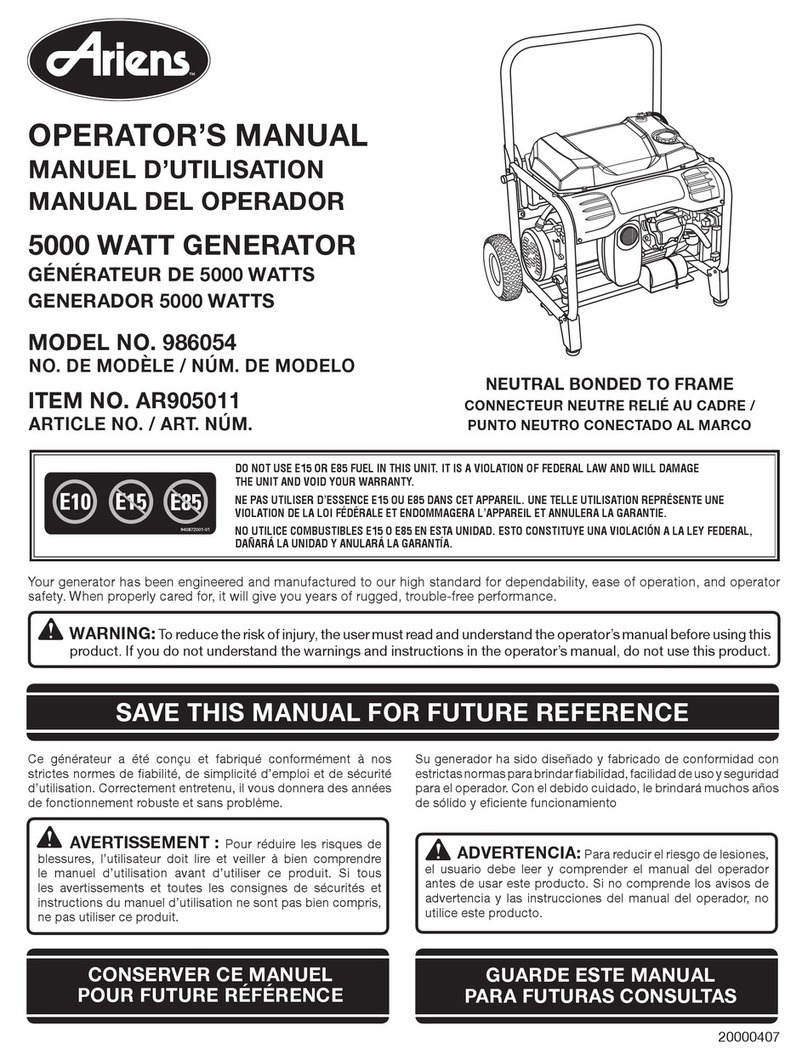
Ariens
Ariens 5000 Watt Generator Operator's manual
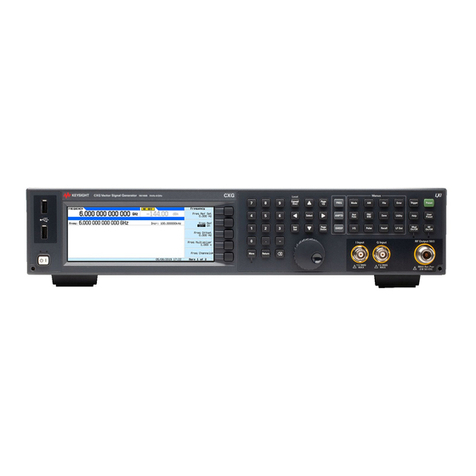
Keysight Technologies
Keysight Technologies X Series Getting started guide

